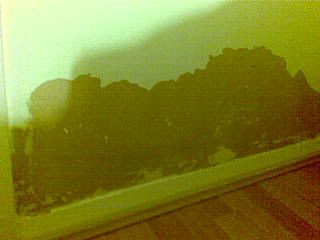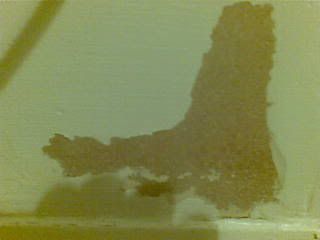Hello
I posted the following message in the decorating and painting section and was advised to post it here aswell.
****original message****
Hello
I painted my house a couple of years ago using Dulux Matt White paint. Over the past few months I have noticed in three areas the paint has loosened and come away from the wall so I can just peel it off. Two of the affected areas are very small but one is fairly large. Its also left what I can only describe as a white residue/powdery substance on the floor. Anyway after searching on google I know that I have to scrape the paint away and sand. Would it be best to prime the bare plaster before applying the top coat? Also what could be causing it? The walls in question are interior, the plaster behind looks alright.
I hope someone can help. Its not a big problem but I would like to know what could be causing it and wil priming it solve it.
The problem is at the bottom of the walls just above the skirting board in all cases, if that helps!
Thanks
Phil
I suspect my problem to be hygroscopic salts. One of the replies I had suggested it could be because I didn't thin down the first coat of paint. However most of the affected areas are where I painted over old paint. I can add to the original that a couple more areas have become affected and I have scraped all the paint away. The plaster behind seems to be affected but only in a couple of the cases.
I hope someone can advice me on what to do.
Thanks
Phil
I posted the following message in the decorating and painting section and was advised to post it here aswell.
****original message****
Hello
I painted my house a couple of years ago using Dulux Matt White paint. Over the past few months I have noticed in three areas the paint has loosened and come away from the wall so I can just peel it off. Two of the affected areas are very small but one is fairly large. Its also left what I can only describe as a white residue/powdery substance on the floor. Anyway after searching on google I know that I have to scrape the paint away and sand. Would it be best to prime the bare plaster before applying the top coat? Also what could be causing it? The walls in question are interior, the plaster behind looks alright.
I hope someone can help. Its not a big problem but I would like to know what could be causing it and wil priming it solve it.
The problem is at the bottom of the walls just above the skirting board in all cases, if that helps!
Thanks
Phil
I suspect my problem to be hygroscopic salts. One of the replies I had suggested it could be because I didn't thin down the first coat of paint. However most of the affected areas are where I painted over old paint. I can add to the original that a couple more areas have become affected and I have scraped all the paint away. The plaster behind seems to be affected but only in a couple of the cases.
I hope someone can advice me on what to do.
Thanks
Phil





